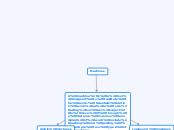Machines
A machine is a tool designed to facilitate the work. Scientists define work as a force acting on an object to move it through a distance. Common examples of work include pushing and pulling. There are two types of machines.
simple machines
It is a single machine or tool that allows us to do many things that would be impossible
we will see 6 types of simple machines
lever
rigid bar that rotates around a fixed point, there are three types
First Class: pliers, scissors and levers
Second Class: Nutcracker and wheelbarrows
Third Class: the elbow, a broom and tweezers.
wheel and axle
A wheel and axle involves a circular rotating part (the wheel) that turns around a shaft (the axle). Turning one part turns the other. Examples include a doorknob, bike handlebars, and car wheels..
pulley
A pulley is a grooved wheel that rotates on a fixed axis with a rope or chain moving on the wheel. Fixed pulleys involve wheels and ropes that are fixed in place. They facilitate lifting by shifting a push up to pull down.
inclined plane
An inclined plane consists of a flat inclined surface. The inclined plane allows us to move objects upwards more easily than lifting the object directly. Lifting an object at a particular height requires a certain amount of work.
Examples of inclined aircraft include a ramp to load a truck, a return road and a ladder.
screw
A screw is really a type of inclined plane. The inclined plane is wound around a publication. The screws can be used to lift objects. Examples of screws include some cats and some piano stools in addition to the screws we normally buy at the hardware store.
wedge
A wedge combines two inclined planes back to back. Portions keep objects away by being forced under or between them. Examples of wedges include ax heads, cutting edges of scissors, nail points and door stops.
compound machines
they consist of two or more simple machines
